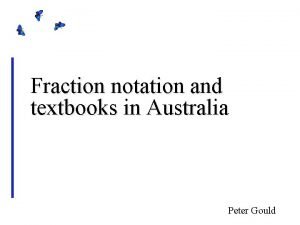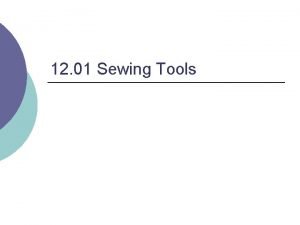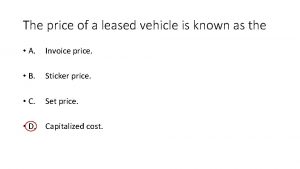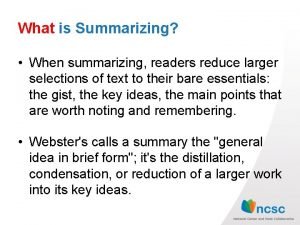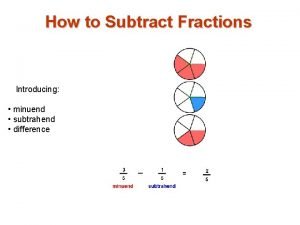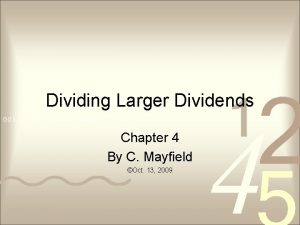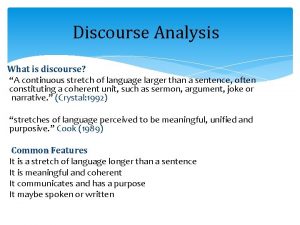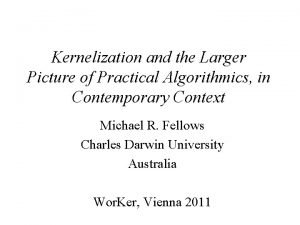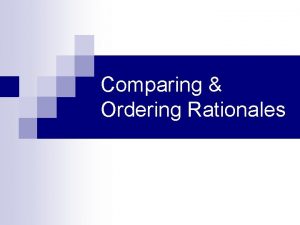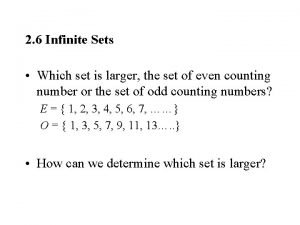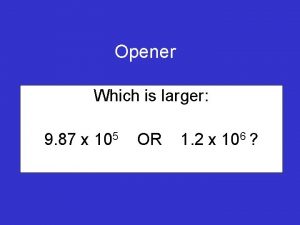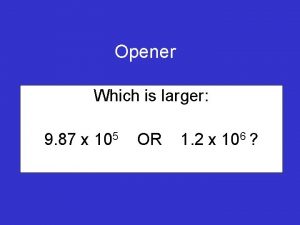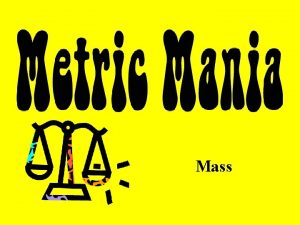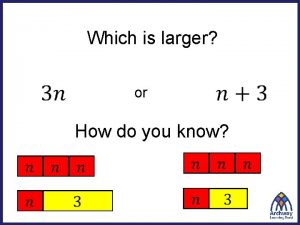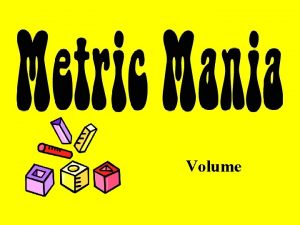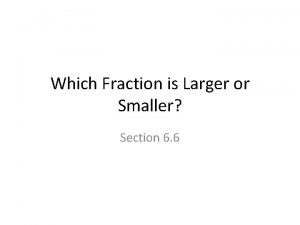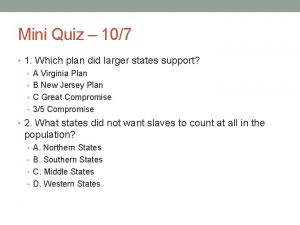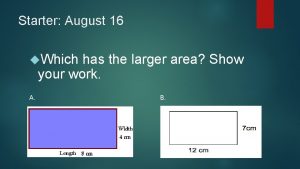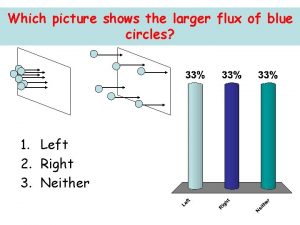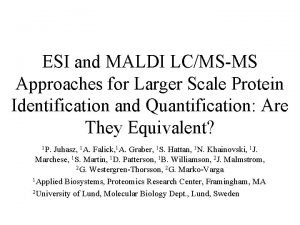Which is larger 14 or 34 34 The
























- Slides: 24


Which is larger: 1/4 or 3/4? 3/4 The larger the numerator, the larger the fraction.

Which is larger: 7/8 or 5/8? 7/8 The larger the numerator, the larger the fraction.

Which is larger: 1/4 or 1/5? 1/4 The larger the denominator, the smaller the fraction.

Which is larger: 3/6 or 3/8? 3/6 The larger the denominator, the smaller the fraction.

Which is larger: 7/10 or 7/8? 7/8 The larger the denominator, the smaller the fraction.


Which fraction is larger: 1 or 3 ? 2 x 4 1 = 4 ? 2 8 x 4 8 To compare fractions with different denominators, find equivalent fractions with the same denominators.

Which fraction is larger: 1 or 3 ? 2 8

Which fraction is larger: 1 or 3 ? 3 x 4 1 = 4 ? 3 12 x 4 12

Which fraction is larger: 1 or 3 ? 3 12

Which fraction is larger: 2 or 5 ? 5 x 2 2 = 4 ? 5 10 x 2 10

Which fraction is larger: 2 or 5 ? 5 10

Which fraction is larger: 2 or 4 ? 3 x 5 2 3 = x 5 x 3 ? 10 15 4 5 = x 3 ? 12 15 5 When one denominator is not a multiple of another, you need to convert both fractions. 15 is a multiple of both 3 and 5, so we can find two equivalent fractions with a denominator of 15.

Which fraction is larger: 2 or 4 ? 3 5

Which fraction is larger: 3 or 5 ? 4 x 3 3 4 = x 3 6 x 2 ? 9 12 5 6 = x 2 ? 10 12 12 is a multiple of both 4 and 6, so we can find two equivalent fractions with a denominator of 12.

Which fraction is larger: 3 or 5 ? 4 6

Which fraction is larger: 5 or 7 ? 6 x 3 5 6 ? 15 = 18 x 3 9 x 2 7 9 = x 2 ? 14 18 18 is a multiple of both 6 and 9, so we can find two equivalent fractions with a denominator of 18.

Which fraction is larger: 5 or 7 ? 6 9


Order these fractions from smallest to largest. 3 5 11 20 1 2 7 10 3 4 12 20 1 2 11 20 10 20 3 5 14 20 7 10 15 20 3 4

1/2 10/20 11/20 3/5 12/20 7/10 14/20 3/4 15/20

Order these fractions from smallest to largest. 3 4 2 3 1 2 1 3 9 12 1 3 8 12 1 2 6 12 2 3 4 12 3 4 5 6 10 12 5 6

1/3 4/12 1/2 6/12 2/3 8/12 3/4 9/12 5/6 10/12
 Equivalent fractions by dividing
Equivalent fractions by dividing Which is larger
Which is larger Which is larger
Which is larger Cheek cell
Cheek cell What is the remainder when 22005 is divided by 7?
What is the remainder when 22005 is divided by 7? Which slide has a larger angle
Which slide has a larger angle Enlarged drawings show components larger than their
Enlarged drawings show components larger than their Color of stars from hottest to coldest
Color of stars from hottest to coldest The line of a dress or the garment's overall shape
The line of a dress or the garment's overall shape Can a realized niche be larger than a fundamental niche
Can a realized niche be larger than a fundamental niche Why do cells divide instead of growing larger
Why do cells divide instead of growing larger Heavy duty cutting of fabric one handle larger than other
Heavy duty cutting of fabric one handle larger than other Timothy was driving his friend nick to football practice
Timothy was driving his friend nick to football practice Any movement that works the larger muscles of the body
Any movement that works the larger muscles of the body The mouse is smaller than the cat
The mouse is smaller than the cat Why is important to summarize a text
Why is important to summarize a text Why do cells divide, instead of simply growing larger?
Why do cells divide, instead of simply growing larger? What the purpose of the larger outer tube on a thermometer
What the purpose of the larger outer tube on a thermometer Comparison of adjectives
Comparison of adjectives Tone soapstone
Tone soapstone Minuend, subtrahend
Minuend, subtrahend Dmsbr
Dmsbr Stretch of language
Stretch of language Yukon larger than life
Yukon larger than life The larger picture summary
The larger picture summary

